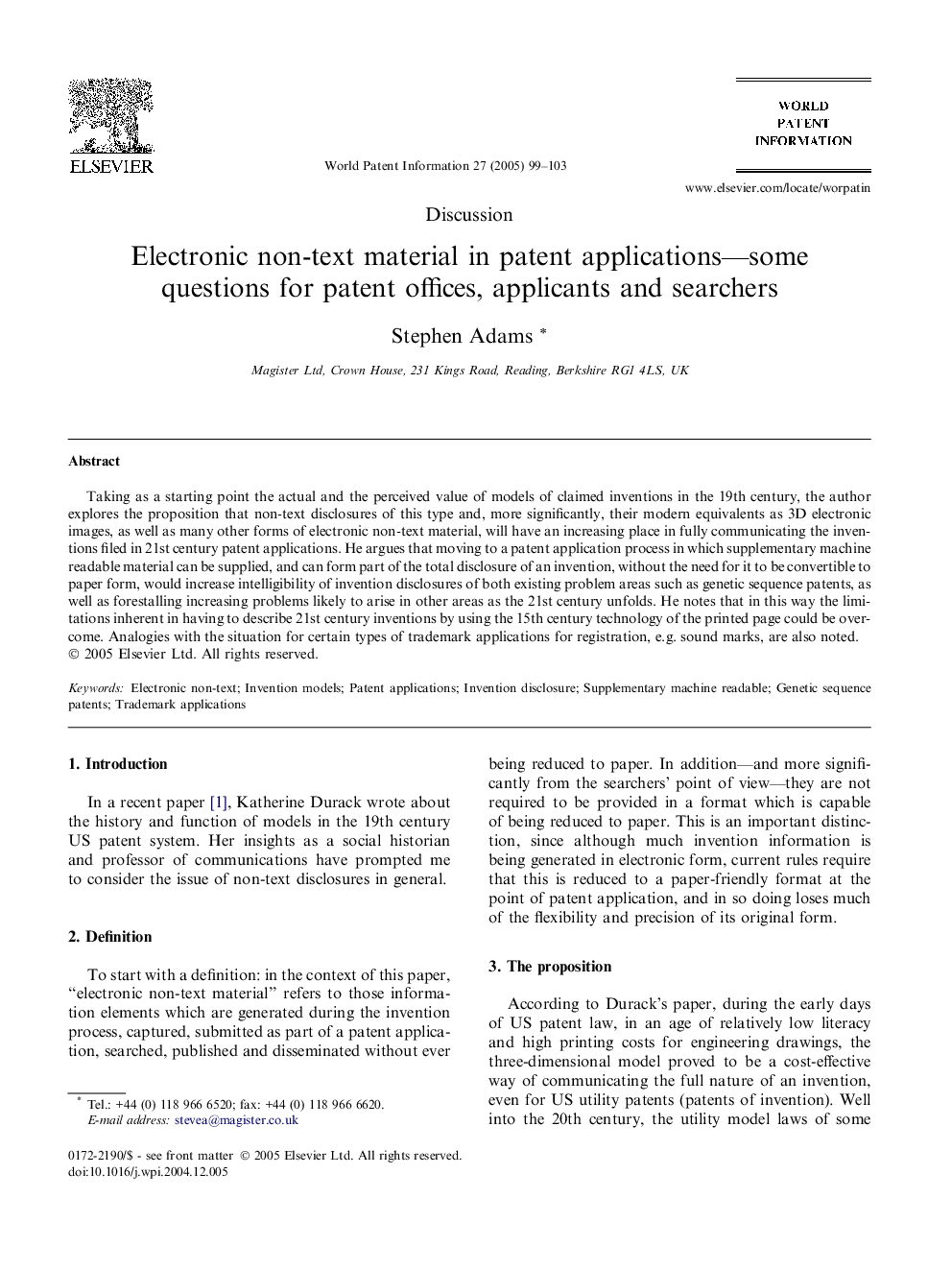| Article ID | Journal | Published Year | Pages | File Type |
|---|---|---|---|---|
| 10238667 | World Patent Information | 2005 | 5 Pages |
Abstract
Taking as a starting point the actual and the perceived value of models of claimed inventions in the 19th century, the author explores the proposition that non-text disclosures of this type and, more significantly, their modern equivalents as 3D electronic images, as well as many other forms of electronic non-text material, will have an increasing place in fully communicating the inventions filed in 21st century patent applications. He argues that moving to a patent application process in which supplementary machine readable material can be supplied, and can form part of the total disclosure of an invention, without the need for it to be convertible to paper form, would increase intelligibility of invention disclosures of both existing problem areas such as genetic sequence patents, as well as forestalling increasing problems likely to arise in other areas as the 21st century unfolds. He notes that in this way the limitations inherent in having to describe 21st century inventions by using the 15th century technology of the printed page could be overcome. Analogies with the situation for certain types of trademark applications for registration, e.g. sound marks, are also noted.
Keywords
Related Topics
Physical Sciences and Engineering
Chemical Engineering
Bioengineering
Authors
Stephen Adams,
